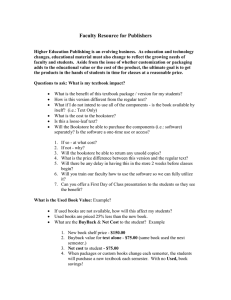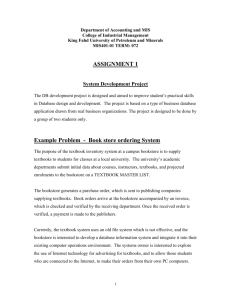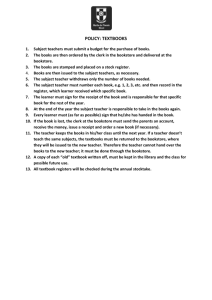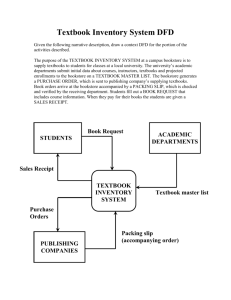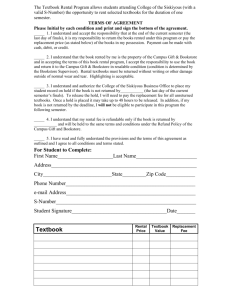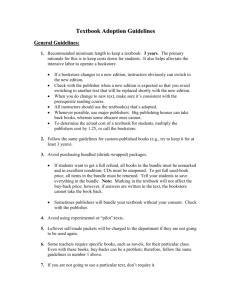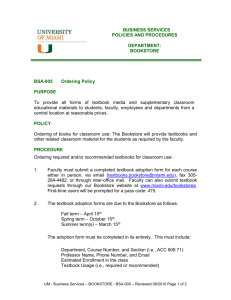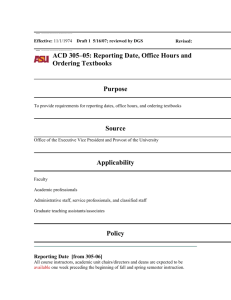Suggestions to Help Improve the Textbook Ordering Process
advertisement
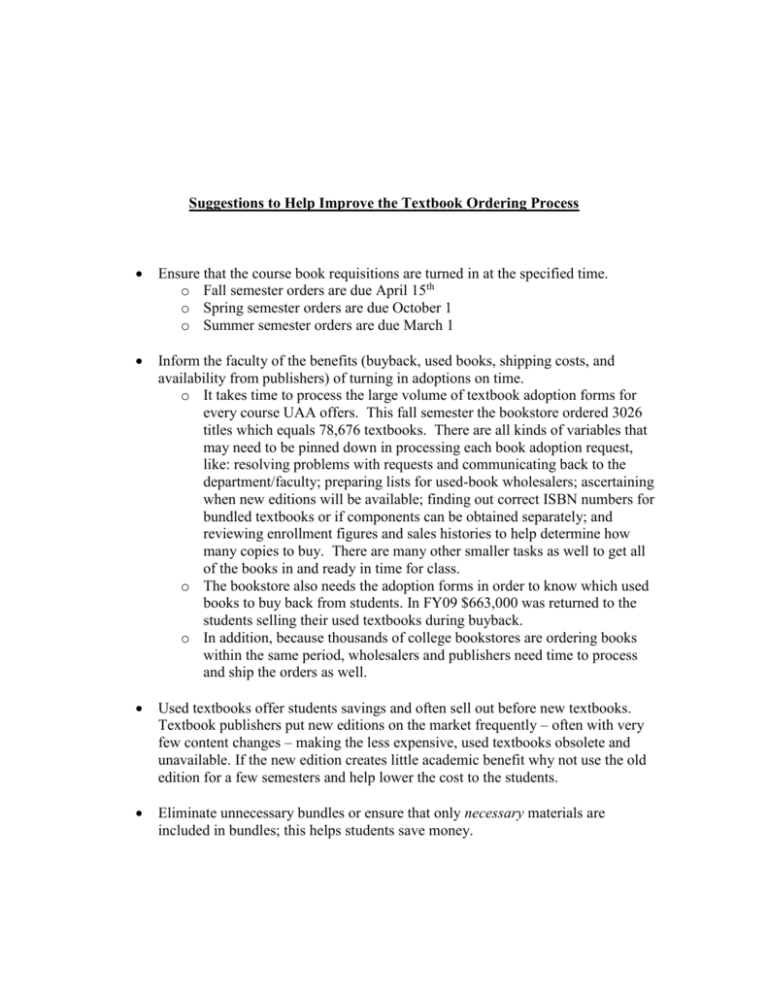
Suggestions to Help Improve the Textbook Ordering Process Ensure that the course book requisitions are turned in at the specified time. o Fall semester orders are due April 15th o Spring semester orders are due October 1 o Summer semester orders are due March 1 Inform the faculty of the benefits (buyback, used books, shipping costs, and availability from publishers) of turning in adoptions on time. o It takes time to process the large volume of textbook adoption forms for every course UAA offers. This fall semester the bookstore ordered 3026 titles which equals 78,676 textbooks. There are all kinds of variables that may need to be pinned down in processing each book adoption request, like: resolving problems with requests and communicating back to the department/faculty; preparing lists for used-book wholesalers; ascertaining when new editions will be available; finding out correct ISBN numbers for bundled textbooks or if components can be obtained separately; and reviewing enrollment figures and sales histories to help determine how many copies to buy. There are many other smaller tasks as well to get all of the books in and ready in time for class. o The bookstore also needs the adoption forms in order to know which used books to buy back from students. In FY09 $663,000 was returned to the students selling their used textbooks during buyback. o In addition, because thousands of college bookstores are ordering books within the same period, wholesalers and publishers need time to process and ship the orders as well. Used textbooks offer students savings and often sell out before new textbooks. Textbook publishers put new editions on the market frequently – often with very few content changes – making the less expensive, used textbooks obsolete and unavailable. If the new edition creates little academic benefit why not use the old edition for a few semesters and help lower the cost to the students. Eliminate unnecessary bundles or ensure that only necessary materials are included in bundles; this helps students save money. Put more department discipline into the textbook selection process. For example, have Department chairpersons, when faculty positions remain unfilled, select the course book to be used and make those selections binding, or do not select a book until the position has been filled. Don’t allow faculty to change books, once ordered, without the Department Chair approval. The bookstore sends a course list to the departments before orders are actually placed with the publishers. This enables the faculty/department to make corrections or changes before the orders are finalized. Departments/faculty need to notify the bookstore about potential changes to major adoptions, enrollment increases, added sections, the number of students without a book, or changes in curriculum requirements. Numbers must be passed on to the bookstore for added sections or over enrollments. The single most important action the faculty can take to improve student perception regarding prices and course materials value is to make sure the items required for the students to buy are an integral part of the course work. At every textbook buyback, we hear students say, “I never had to open it,” causing them considerable frustration. The bookstore is committed to providing excellent service. Open communication leads to respect for each other’s concerns and responsibilities. The bookstore can then work together with faculty to come up with solutions to any problems that arise. This benefits our ultimate customer – the students. Alessandra and I welcome your phone calls, emails, or the opportunity to meet with you, your deans, directors, and administive staff to develop a more collaborative approach to this important process. Joyce Colajezzi Director of Business Services 786-1153 anjjc@uaa.alaska.edu Alessandra Abramczyk Assistant Bookstore Director 786-4749 anama1@uaa.alaska.edu
